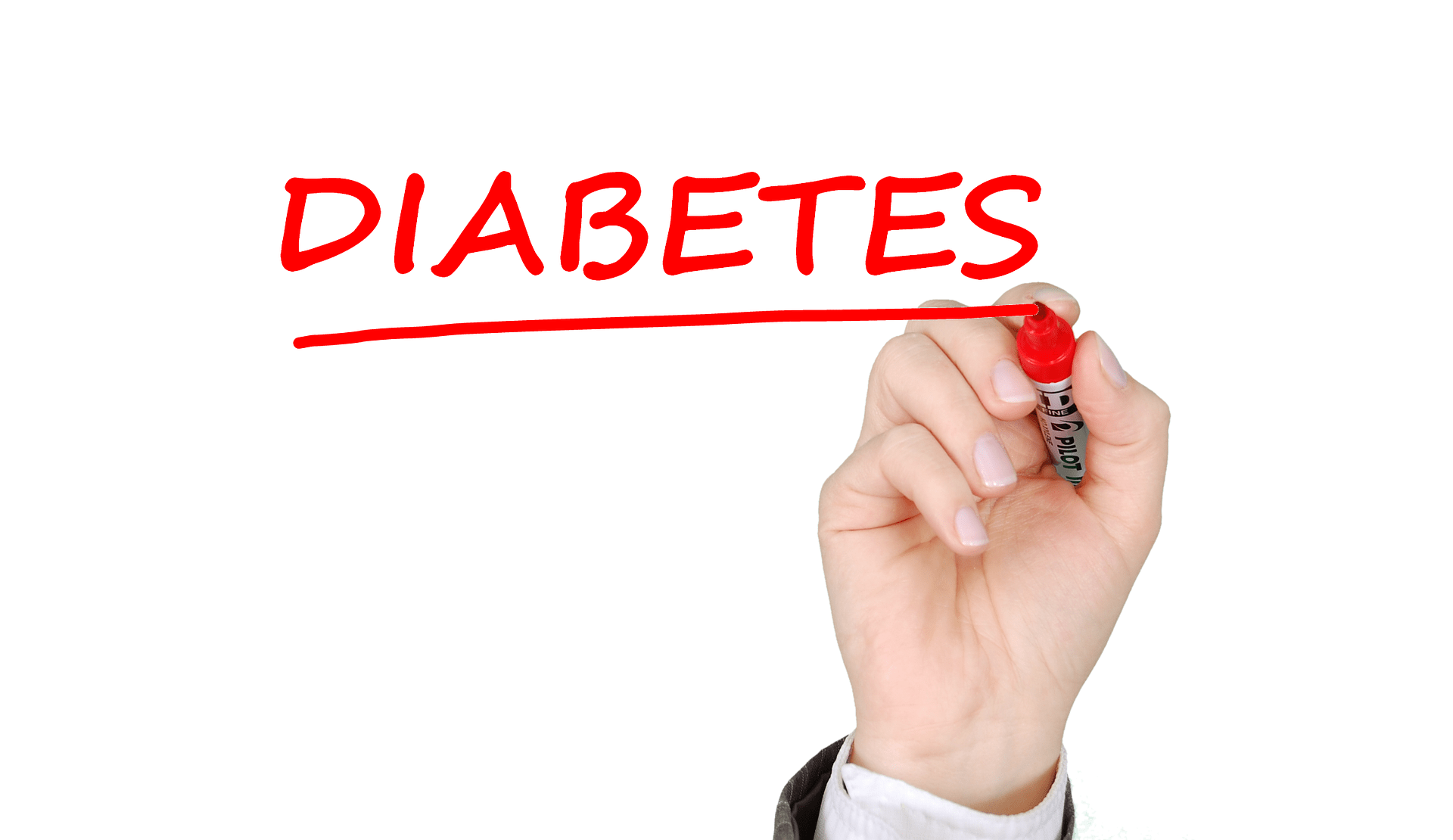Diabetes is something we all have heard of but the majority of you have never thought much more about it. Even if your family has diabetes, we still are not very alarmed about it. Medicine has given a false sense of “control” by having many different medication options and in our sedentary, don’t be preventative society taking a pill is the easiest route that most people follow. However, what we are seeing with COVID is that those people in “control” with diabetes have a higher risk of an adverse outcome if they get it. Perhaps this virus is pulling back the curtain on the status quo and raising the question….are you really healthy? 34.2 million people have diabetes which is disturbing but it is even more alarming that 7.3 million people have diabetes that don’t even know it yet! We miss diabetes for a variety of reasons:
- You really don’t have symptoms until the diabetes is very advanced.
- Traditional physicians only screen with a fasting glucose level which will miss a lot of people who have pre-diabetes. In addition, medicare won’t allow the screening test which really flushes out pre-diabetes until you already have been diagnosed with diabetes. Seems a little backward, right?
- Even when you do a test that shows borderline blood sugars, many physicians/patients don’t do anything proactive to start turning this around and wait until you are full blown diabetic and need medication.
There are two different kinds of diabetes – Type 1 which is caused when the pancreas cannot make insulin often due to an autoimmune issue attacking the cells that produce insulin. Type 1 requires insulin always and this article is not addressing this type of diabetes. Type 2 diabetes is usually caused by insulin resistance and in severe cases might require insulin. Diet and lifestyle changes make a huge impact on Type 2 diabetes.
A quick geeky moment on insulin so we all understand what it does… insulin is made in the pancreas and is released into the blood stream with the purpose of binding glucose (sugar) in the blood stream and carrying it across the cell membrane into the cell where it is used by the cell. With insulin resistance, the body will release it but once it binds the glucose it can’t carry it across the membrane. Inside the cell It is not getting any glucose (or decreased amounts) so the signal goes out to make more insulin. Initially, the increased insulin is able to overcome the difficulty getting into the cell but as this problem continues it gets harder and harder so more and more insulin is required. This causes the blood sugars to continue to rise. High sugars in the blood stream are inflammatory and start causing all sorts of havoc which leads to a multitude of medical issues including: neuropathy (numbness of feet/hands), eye damage, kidney damage, loss of limbs and accelerated heart disease (just to name a few).
READ ON to learn what test you need to really screen for diabetes, what you can do to help reverse pre-diabetes/diabetes and how to eat to avoid blood sugar spikes…
Testing for diabetes is often limited to a fasting glucose which will only be elevated if you have full blown diabetes in most cases. There are a lot of great tests available including insulin levels and a brand new test called Insulin Resistance Score (IR score). This test is going to be a game changer because it can pick up insulin resistance as early as 10 years before you actually develop diabetes!! Talk about prevention! This test is getting ready to be my new favorite wake up call!
I also like looking at the Hemoglobin A1C which tells you the three month average of your blood sugars so it rats you out every time. Normal A1C levels are supposed to be less than 5.7 and ideally below 5.6. If you have anything above these levels then you are having trouble with your sugar levels. Once you reach the 6.4 or 6.5 range you have full blown diabetes. So many times I see patients who are on medications for their blood sugars and have been told their A1C is in a good range and when I look at the number it will be above 8. That is NOT fine! Don’t settle with that number and think you are doing ok because you aren’t.
If your A1C is over 5.7 then you need to take action, right now! I had a beautiful patient whose A1C starting inching up several years ago (pre-diabetes). I raised the alarm bell and told her where this was going if she didn’t make some changes. We talked about diet changes, exercise changes, stress management and added supplements which she didn’t take seriously. Her sugars climbed to where she eventually needed medication and then the easy medications quit working so she had to start taking other medications and eventually had to add insulin all to keep her sugars under control. One month she had a wake up call when one of her dear friends who was also diabetic had a major problem and this finally jolted her into action. She committed to changing her diet – not for two weeks but for life and started exercising. Slowly but surely she started losing weight and her sugars started dropping. She is now no longer on insulin and only taking small doses of a blood sugar pill and hasn’t felt this good in years. What is it going to take to jolt you to take action?
If you don’t know if you are a diabetic go get tested. If you are overweight, have had gestational diabetes or have a family history of diabetes then you definitely should be screened using these tests. (I like screening everyone!!)
Ready? Here is your action plan….
- Change your diet. I wish I had a penny for the phrase “I don’t eat that bad”. When I look at their diets they are right but they aren’t balanced diets. Most people who are diabetic aren’t sitting around eating tons of sugar. The problem is that so many foods convert to sugars once they are in our body. Mornings are often filled with oatmeal and fruit which both of these just gave you a huge sugar spike. While fruit has some wonderful antioxidants, most fruits create a significant sugar spike so it becomes necessary to learn how to eat fruits properly and in limited quantities. For most diabetics, fruits more than once a day is just a no-no. Starches are hidden causes of sugar spikes, too. Stay away from the potatoes, rice and pastas and use these in smaller quantities. Forget the baked potato bar, choose a side of a potato and limit the amount. Same thing for rice bowls – too much rice! You also have to learn how to pair your foods together to avoid sugar spikes. Examples include instead of having a snack of carrots, have carrots and hummus. You need good protein or fats to offset a sugar spike in a food. All of this is based on something called glycemic control and you can google high glycemic foods which will tip you off what foods you need to limit and pair with protein/fats.
- When you exercise you are altering your insulin resistance and decreasing that barrier. Even just 10 minutes a day will get you started on the right track. Just get moving.
- There are a multitude of supplements than can help with insulin resistance. If your sugars are not very high then chromium, cinnamon, or timed release alpha lipoic acid (Alamax CR by Xymogen) can help with the balance. My favorite supplement for higher sugars is berberine. Berberine has been clinically shown to reduce blood sugars and in my experience I have found it to be as effective as Metformin (a blood sugar pill Rx) in majority of the cases. You need a good quality supplement though so don’t grab the bargain brand and expect it to work. (we have a great one!) If sugars are really high I love specialty medical food shakes that are packed with blood sugar lowering goodness. I have seen just an addition of one shake a day lower blood sugars by 20 points without any other changes! I have two favorites: Ultraglucose Control by Metagenics and Optimetabolix by Xymogen.
- Check your blood sugars. The blood sugar monitors are inexpensive and can be a great way for you to start seeing the improvements real time. This helps keep you motivated and on track. There are some newer monitor systems that involve a monitor you place on your arm and wear it for two weeks. All you have to do to see what your sugars are is put the sensor up to the monitor and it reads it so you don’t have to prick your finger every time.
Find your motivation to take control over your blood sugars because if you are waiting for a symptom then damage is already done. It is never too late to start working on a healthier lifestyle because even if you have diabetes every 10 points you lower your sugars the better off you will be!
To your health,
Laura









